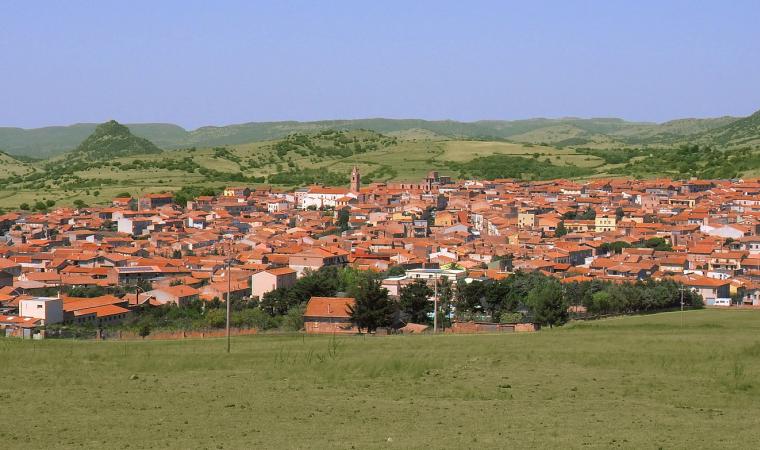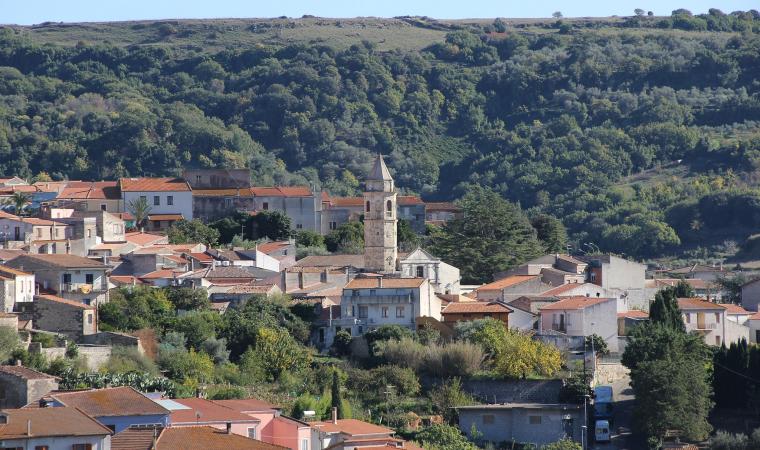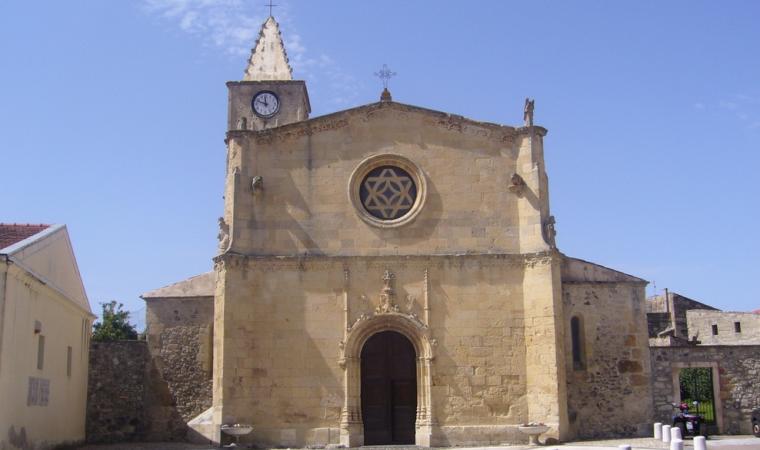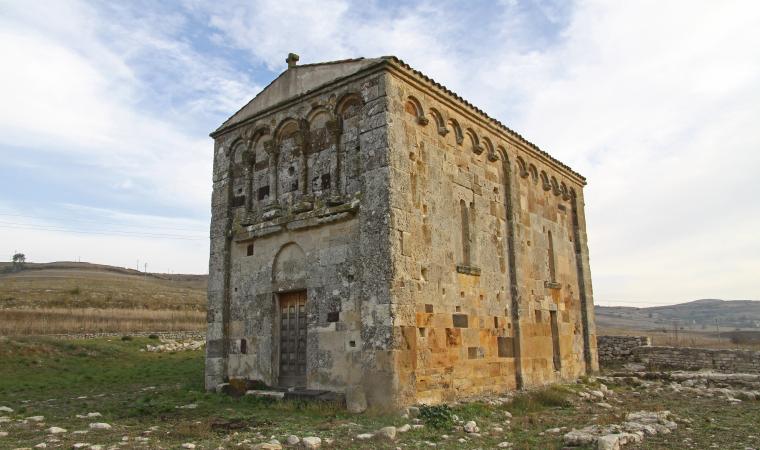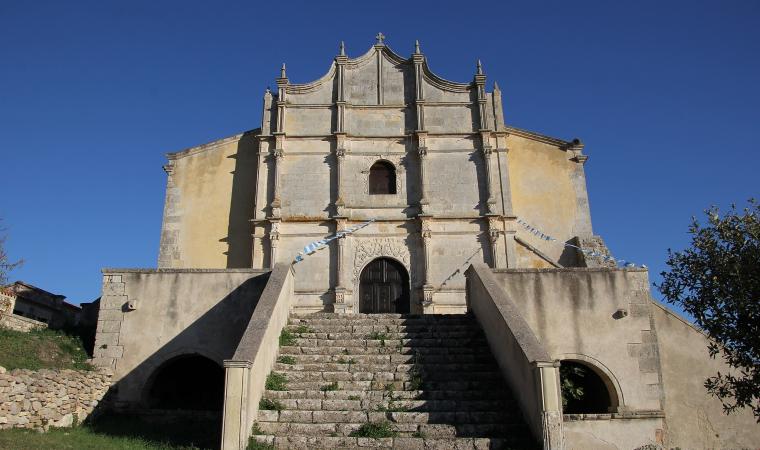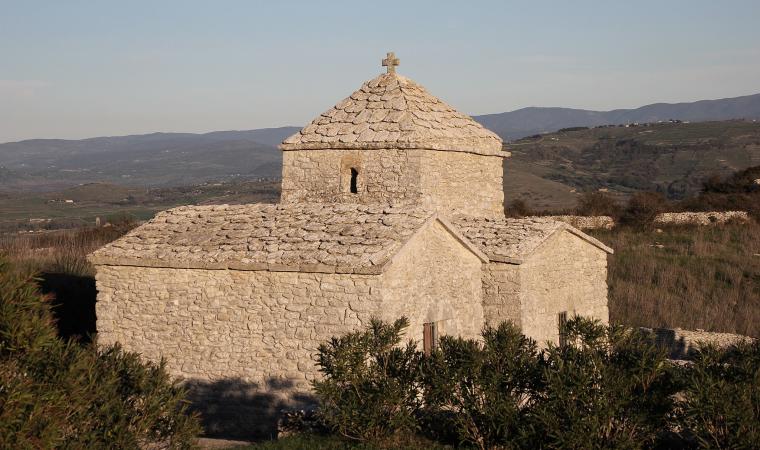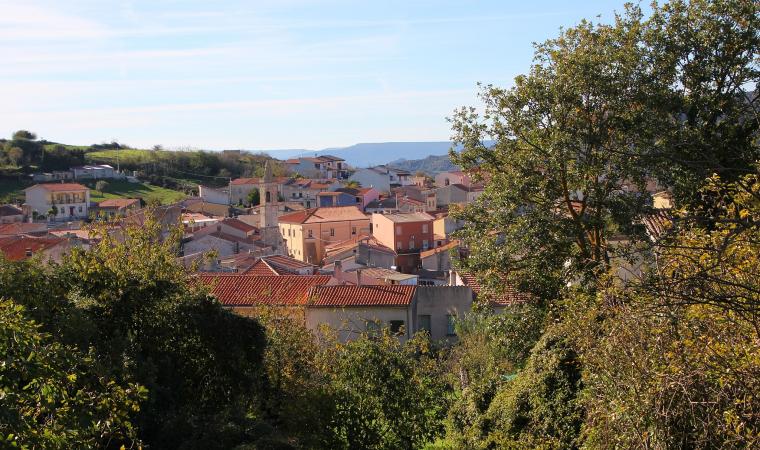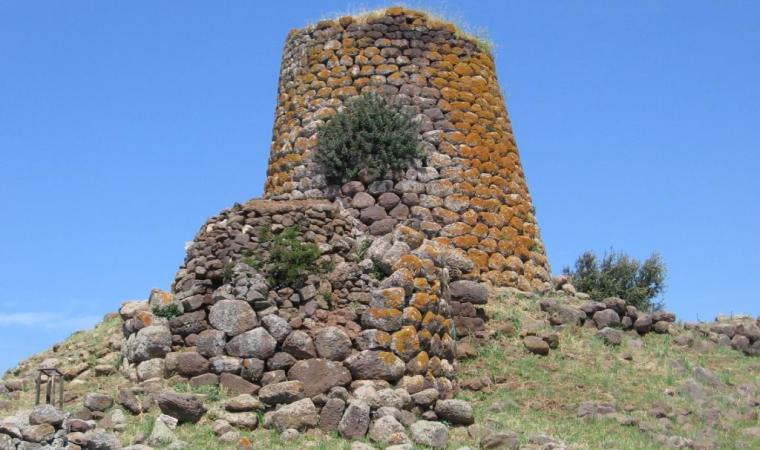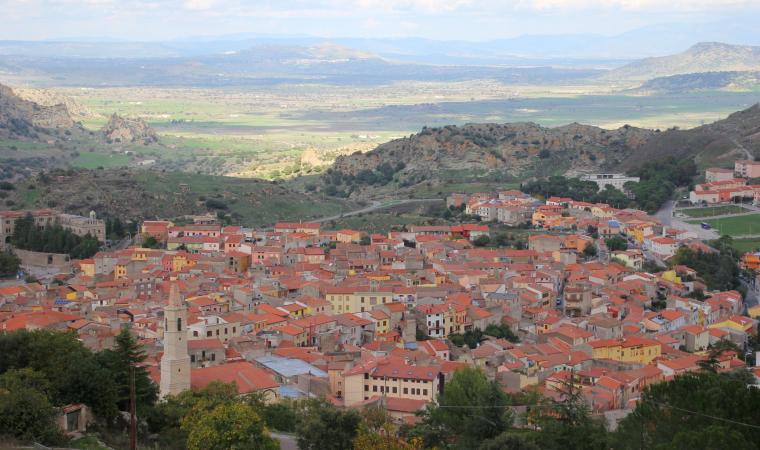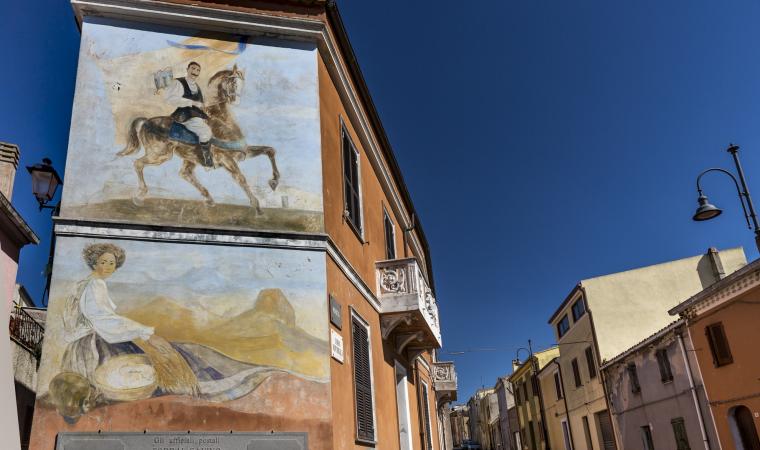Several inscriptions, dotted around the inside of the chapels, indicate its construction period, between 1551 and 1598, but it is sufficient to admire the bright façade and the internal layout, comparing them to the churches of Santa Giulia in Padria and San Francesco in Alghero, in order to place the church of San Giorgio among the most perfect examples of Gothic-Aragonese architecture on the island. The Parish Church of Pozzomaggiore is the heart, as well as the most precious building, of the historic centre of the Logudoro village of Meilogu, fief of the de Ferrera family of Alghero between the 15th and 16th centuries.
The sandstone ashlar façade is closed by two slanting lateral buttresses and divided into two orders by a cornice decorated with a vine shoot. In the lower one, there is a portal over which there is a large arch decorated with small columns and pinnacles, while the upper order is dominated by a rose window. There is a spire on top of the square-shaped bell tower. Once you go through the entrance, on the left you will notice a 19th century baptismal font and, when observing the church hall, you will notice that it is divided into five bays with a ribbed cross vault and a hanging keystone. On the sides of the nave there are barrel-vaulted chapels, five on each side. The third chapel on the right is dedicated to Saint Anna and contains a multicoloured stone statue of Saint Sebastian, sculpted from the living rock, on which the date 1570 is engraved. On the left side, a valuable wooden altar stands out inside the chapel dedicated to Saints Andrea, Gavino and Barbara and statues of them decorate three niches in the altar table. You will be surprised by another work carved in the wood, positioned inside the adjacent chapel, dedicated to Saints Sebastiano, Lorenzo and Narciso: it is the wooden group of Saint George, featuring Hispanic workmanship, dating back to the 16th century. The Saint, with a helmet and armour, is on the back of his horse, slaying the dragon with its jaws wide open. There is a wooden pulpit between the two chapels. The main altar is, instead, made of multicoloured marble and has a niche in the centre, containing another statue of the saint, to whom it is dedicated, killing the dragon. Originally, the altar also contained an altarpiece with six canvases, now transformed into paintings placed between the chapels and the sacristy.
An aura of legend lingers around the church: it is said that during its construction, a tireless worker was part of the workforce. Nobody asked him who he was or where he came from and he would mysteriously disappear during breaks for refreshments and when it was time to collect his pay. The locals became convinced that the man was Saint George himself. Every year, during the celebrations for the saint, a traditional Ardia, a test of skill and courage on horseback, is held around Piazza Maggiore. Another equestrian joust, this time in honour of Saint Constantine, is celebrated around the Neo-Romanesque-Byzantine church dedicated to him: it is the most eagerly-awaited and heartfelt event in Pozzomaggiore.


